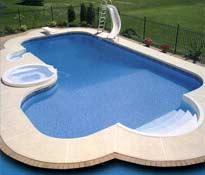
The Swimming Pool
A swimming pool, swimming bath, wading pool, paddling pool, or simply a pool, is a container filled with water intended for swimming or water-based recreation. There are many standard sizes, the largest of which is the Olympic-size swimming pool. A pool can be built either above or in the ground, and from materials such as concrete (also known as gunite), metal, plastic or fiberglass.
Pools that may be used by many people or by the general public are called public, while pools used exclusively by a few people or in a home are called private. Many health clubs, fitness centers and private clubs have public pools used mostly for exercise. Many hotels have pools available for their guests. Hot tubs and spas are pools with hot water, used for relaxation or therapy, and are common in homes, hotels, clubs and massage parlors. Swimming pools are also used for diving and other water sports, as well as for the training of lifeguards and astronauts.
History
Ancient Greeks and Romans built artificial pools for athletic training in the palaestras, for nautical games and for military exercises. Roman emperors had private swimming pools in which fish were also kept, hence one of the Latin words for a pool, piscina. The first heated swimming pool was built by Gaius Maecenas of Rome in the first century BC. Gaius Maecenas was a rich Roman lord and considered one of the first patrons of arts.
After the modern Olympic Games began in 1896 and included swimming races, the popularity of swimming pools began to spread. In 1839, Oxford had its first major public indoor pool at Temple Cowley, and swimming began to take off. The Amateur Swimming Association was founded in 1869 in England, and the Oxford Swimming Club in 1909 with its home at Temple Cowley Pool. The presence of indoor baths in the cobbled area of Merton Street, London may have persuaded the less hardy of the aquatic brigade to join. So, bathers gradually became swimmers, and bathing pools swimming pools.
Interest in competitive swimming grew following World War I. Standards improved and training became essential. Home swimming pools became popular in the United States after World War II and the publicity given to swimming sports by Hollywood films like Esther Williams Million Dollar Mermaid made a home pool a desirable status symbol. More than fifty years later, the home or residential swimming pool is ubiquitous and even small nations enjoy a thriving swimming pool industry.
Types
Pools can be either indoors or outdoors. They can be of any size and shape, and inground or above ground. Most pools are permanent fixtures, while others are temporary, collapsible structures.
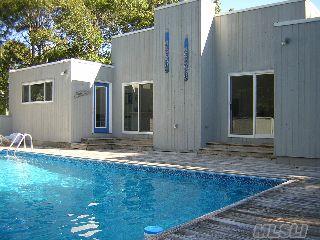
Private pools
Private pools are usually smaller than public pools, on average 12 ft × 24 ft (3.7 m × 7.3 m) to 20 ft × 40 ft (6.1 m × 12 m) whereas public pools usually start at 80 ft (24 m). Home pools can be permanently built-in, or be assembled above ground and disassembled after summer. Privately owned outdoor pools in backyards or gardens started to proliferate in the 1950s in regions with warm summer climates, particularly in the United States.
Private pools are increasingly a feature of homes in greater latitudes. For example, in London many larger homes are now refurbished with indoor pools, usually in the basement or in a conservatory.
Construction methods for private pools vary greatly. The main types of in-ground pools are gunite Shotcrete, concrete, vinyl-lined, and one-piece fiberglass shells.
Many countries now have strict pool fencing requirements for private swimming pools, which require pool areas to be isolated so that unauthorized children younger than six years cannot enter. Many countries require a similar level of protection for the children residing in or visiting the house, although many pool owners prefer the visual aspect of the pool in close proximity to their living areas, and will not provide this level of protection. There is no consensus between states or countries on the requirements to fence private swimming pools, and in many places they are not required at all, particularly in rural settings.
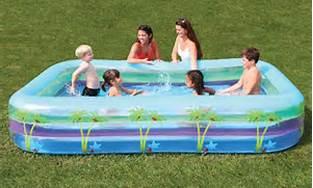
Children's pools
Inexpensive temporary Polyvinyl chloride pools can be bought in supermarkets and taken down after summer. They are used mostly outdoors in yards, are typically shallow, and often their sides are inflated with air to stay rigid. When finished, the water and air can be let out and this type of pool can be folded up for convenient storage. They are regarded in the swimming pool industry as "splasher" pools intended for cooling off and amusing toddlers and children, not for swimming, hence the alternate name of "kiddie" pools.
Toys are available for children and other people to play with in pool water. They are often blown up with air so they are soft but still reasonably rugged, and can float in water.
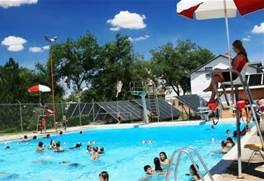
Public pools
Public pools are often part of a larger leisure centre or recreational complex. These centres often have more than one pool, such as an indoor heated pool, an outdoor (chlorinated, saltwater or ozonated) pool which may be heated or unheated, a shallower children's pool, and a paddling pool for toddlers and infants. There may also be a sauna and one or more hot tubs or spa pools ("jacuzzis").
Many upscale hotels and holiday resorts have a swimming pool for use by their guests. If a pool is in a separate building, the building may be called a natatorium. The building may sometimes also have facilities for related activities, such as a diving tank. Larger pools sometimes have a diving board affixed at one edge above the water.
Many public swimming pools are rectangles 25 m or 50 m long, but they can be any size and shape. There are also elaborate pools with artificial waterfalls, fountains, splash pads, wave machines, varying depths of water, bridges, and island bars.
Some swimming facilities have lockers for clothing and other belongings. The lockers can require a coin to be inserted in a slot, either as deposit or payment. There are usually showers - sometimes mandatory - before and/or after swimming. There are often also lifeguards to ensure the safety of users.
Wading or paddling pools are shallow bodies of water intended for use by small children, usually in parks. Concrete wading pools come in many shapes, traditionally rectangle, square or circle. Some are filled and drained daily due to lack of a filter system. Staff chlorinate the water to ensure health and safety standards.
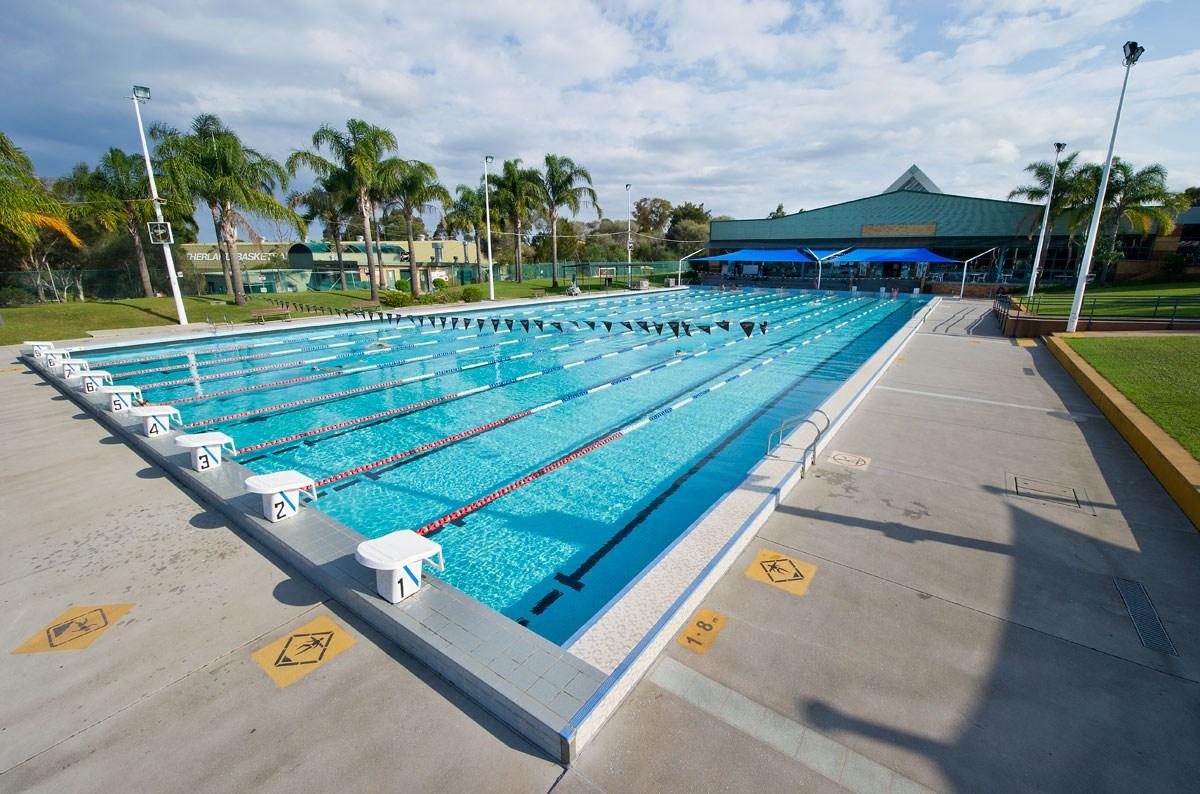
Competition pools
The Fédération Internationale de la Natation (FINA, International Swimming Federation) sets standards for competition pools: 25 or 50 m (82 or 164 ft) long and at least 1.35 m (4.4 ft) deep. Competition pools are generally indoors and heated to enable their use all year round, and to more easily comply with the regulations regarding temperature, lighting, and automatic officiating equipment.An Olympic-size swimming pool (first used at the 1924 Olympics) is a pool that meets FINA's additional standards for the Olympic Games and for world championship events. It must be 50 m (160 ft) in length by 25 m (82 ft) wide, divided into eight lanes of 2.5 m (8.2 ft) each plus two areas of 2.5 m (8.2 ft) at each side of the pool. The water must be kept at 25–28 °C (77–82 °F) and the lighting level at greater than 1500 lux. Depth must be at least 2 m (6.6 ft), and there are also regulations for color of lane rope, positioning of backstroke flags (5 meters from each wall), and so on. Pools claimed to be "Olympic pools" do not always meet these regulations, as FINA cannot police use of the term. Touchpads are mounted on both walls for long course meets and each end for short course.
A pool may be referred to as fast or slow, depending on its physical layout. Some design considerations allow the reduction of swimming resistance making the pool faster: namely, proper pool depth, elimination of currents, increased lane width, energy absorbing racing lane lines and gutters, and the use of other innovative hydraulic, acoustic and illumination designs.
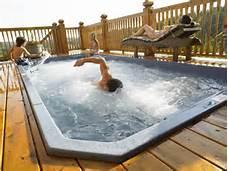
Exercise pools
In the last two decades, a new style of pool has gained popularity. These consist of a small vessel (usually about 2.5 m x 5 m) in which the swimmer swims in place, either against the push of an artificially generated water current or against the pull of restraining devices. These pools have several names, such as swim spas, swimming machines, or swim systems. They are all examples of different modes of resistance swimming.
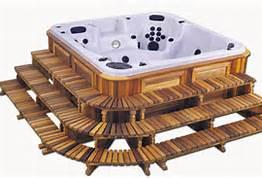
Hot tubs and spa pools
Hot tubs and spa pools are common heated pools used for relaxation and sometimes for therapy. Commercial spas are common in the swimming pool area or sauna area of a health club or fitness centre, in men's clubs, women's clubs, motels and exclusive five star hotel suites. Spa clubs may have very large pools, some segmented into increasing temperatures. In Japan, men's clubs with many spas of different size and temperature are common. Commercial spas are generally made of concrete, with a mosaic tiled interior. More recently with the innovation of the Pre-Form Composite method where Mosaic tiles are bonded to the shell this enables Commercial spas to be completely factory manufactured to specification and delivered in one piece. Hot tubs are typically made somewhat like a wine barrel with straight sides, from wood such as Californian redwood held in place by metal hoops. Immersion of the head is not recommended in spas or hot tubs due to a potential risk of underwater entrapment from the pump suction forces. However, commercial installations in many countries must comply with various safety standards which reduce this risk considerably.
Home spas are a worldwide retail item in western countries since the 1980s, and are sold in dedicated spa stores, pool shops, department stores, the Internet, and catalog sales books. They are almost always made from heat-extruded acrylic sheet Perspex, often colored in marble look-alike patterns. They rarely exceed 8 sq ft (0.74 m2) and are typically 3 ft 6 in (1.07 m) deep, restricted by the availability of the raw sheet sizes (typically manufactured in Japan). There is often a mid-depth seating or lounging system, and contoured lounger style reclining seats are common. Upmarket spas include various jet nozzles (massage, pulsating, etc.), a drinks tray, lights, LCD flat-screen TV sets and other features that make the pool a recreation center. Due to their family-oriented nature, home spas are normally operated from 36 to 39 °C (97 to 102 °F). Many pools are incorporated in a redwood or simulated wood surround, and are termed "portable" as they may be placed on a patio rather than sunken into a permanent location. Some portable spas are shallow and narrow enough to fit sideways through a standard door and be used inside a room. Low power electric immersion heaters are common with home spas.
Whirlpool tubs first became popular in America during the 1960s and 1970s. A spa is also called a "jacuzzi" in USA since the word became a generic after plumbing component manufacturer Jacuzzi introduced the "Spa Whirlpool" in 1968. Air bubbles may be introduced into the nozzles via an air-bleed venturi pump that combines cooler air with the incoming heated water to cool the pool if the temperature rises uncomfortably high. Some spas have a constant stream of bubbles fed via the seating area of the pool, or a footwell area. This is more common as a temperature control device where the heated water comes from a natural (uncontrolled heat) geothermal source, rather than artificially heated. Water temperature is usually very warm to hot — 38 to 42 °C (100 to 108 °F), so bathers usually stay in for only 20 to 30 minutes. Bromine or mineral sanitizers are often recommended as sanitizers for spas because chlorine dissipates at a high temperature thereby heightening its strong chemical smell. Ozone is an effective bactericide and is commonly included in the circulation system with cartridge filtration, but not with sand media filtration due to clogging problems with turbid body fats.
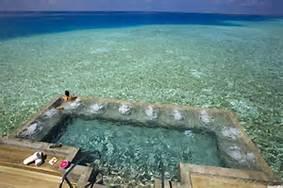
Ocean pools
In the early 20th century, especially in Australia, ocean pools were built, typically on headlands by enclosing part of the rock shelf, with water circulated through the pools by flooding from tidal tanks or by regular flooding over the side of the pools at high tide. This continued a pre-European tradition of bathing in rockpools, or bogey holes with many of the current sites being expanded from sites used by Australian Aborigines. Bathing in these pools provided security against both rough surf and sharks. There were often separate pools for women and men, or the pool was open to the sexes at different times with a break for bathers to come without fear of observation by the other sex. These were the fore-runners of modern 'Olympic' pools. A variation was the later development of sea- or harbour-side pools that circulated sea water using pumps. A pool of this type was the training ground for Australian Olympian Dawn Fraser.
There are currently about 100 ocean baths in New South Wales, which can range from small pools roughly 25 metres long and "Olympic Sized" (50m) to the very large, such as the 50x100m baths in Newcastle. While most are free, a number charge fees, such as the Bondi Icebergs pool at Bondi Beach. Despite the development of chlorinated and heated pools, ocean baths remain a popular form of recreation in New South Wales.
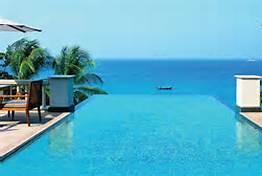
Infinity pools
An infinity edge pool (also named negative edge or vanishing edge pool) is a swimming pool which produces a visual effect of water extending to the horizon, vanishing, or extending to "infinity". Often, the water appears to fall into an ocean, lake, bay, or other similar body of water. The illusion is most effective whenever there is a significant change in elevation, though having a natural body of water on the horizon is not a limiting factor.
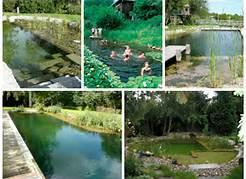
Natural pools and ponds
Natural pools were developed in central and western Europe in the early and mid-1980s by designers and landscape architects with environmental concerns. They have recently been growing in popularity as an alternative to traditional swimming pools. NSPs are constructed bodies of water in which no chemicals or devices that disinfect or sterilize water are used, and all the cleaning of the pool is achieved purely with the motion of the water through biological filters and plants rooted hydroponically in the system. In essence, NSPs seek to recreate swimming holes and swimmable lakes, the environment where people feel safe swimming in a non-polluted, healthy, and ecologically balanced body of water.
Water in NSPs has many desirable characteristics. For example, red eyes, dried-out skin and hair, and bleached bathing suits associated with overly chlorinated water are naturally absent in NSPs. NSPs, by requiring a water garden to be a part of the system, offer different aesthetic options and can support amphibious wild life such as snails, frogs, and salamanders.
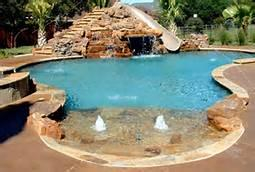
Zero-entry swimming pools
A zero-entry swimming pool, also called a beach entry swimming pool, is a swimming pool having an edge or entry that gradually slopes from the deck into the water, becoming deeper with each step, in the manner of a natural beach. As there are no stairs or ladders to navigate, this type of entry assists older people, young children and people with accessibility problems where gradual entry is useful.
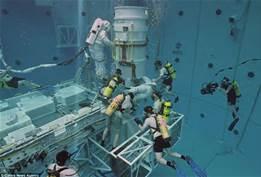
Other uses
Swimming pools are also used for events such as synchronized swimming, water polo, canoe polo and underwater sports such as underwater hockey, underwater rugby, finswimming and sport diving as well as for teaching diving, lifesaving and scuba diving techniques. They have also been used for specialist tasks such as teaching water-ditching survival techniques for aircraft and submarine crews and astronaut training. Round-cornered, irregular swimming pools, such as the Nude Bowl, were drained of water and used for vertical skateboarding.
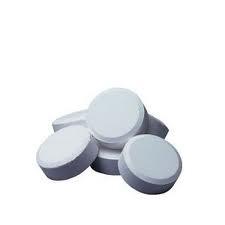
Sanitation
Swimming pool water must maintain low levels of bacteria and viruses to prevent the spread of diseases and pathogens. Bacteria, algae and insect larvae can enter the pool if water is not properly sanitized. Pumps, mechanical filters, and disinfectants are often used to filter the water.
Chemical disinfectants, such as chlorine (usually as a hypochlorite salt, such as calcium hypochlorite) and bromine, are commonly used to kill pathogens. If not properly maintained, chemical sanitation can produce high levels of Disinfection byproducts. Sanitized swimming pool water can theoretically appear green if iron or certain minerals are in the water. The green color is often attributed to oxidized copper compounds, such as copper chloride.
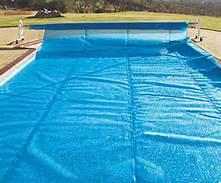
Covers
Swimming pool heating costs can be significantly reduced by using a pool cover. Use of a pool cover also can help reduce the amount of chemicals (chlorine, etc.) required by the pool. Outdoor pools gain heat from the sun, absorbing 75%–85% of the solar energy striking the pool surface. Though a cover decreases the total amount of solar heat absorbed by the pool, the cover eliminates heat loss due to evaporation and reduces heat loss at night through its insulating properties. Most swimming pool heat loss is through evaporation.
The heating effectiveness of a cover depends on type. A transparent bubble cover is the most effective, as it allows the largest amount of solar flux into the pool itself. Thermal bubble covers are lightweight UV stabilized floating covers designed to minimize heat loss on heated swimming pools. Typically they are only fitted in spring and fall (autumn) when the temperature difference between pool water and air temperature is greatest. They raise temperature of a pool by around 20 °Fahrenheit, or 11 °Celsius, after being on the pool for a week. Bubble covers are typically applied and removed by being rolled up on a device fitted to one side of the pool (see illustration). Covers fall apart after 4 or 5 years due to sun exposure, overheating in the sun while off the pool, and chlorine attacking the plastic. Bubble covers should be removed during super chlorination.
A vinyl cover absorbs more sunlight directly, allowing temperature to rise faster, but ultimately prevents the pool from reaching as high a temperature as a clear cover. Vinyl covers consist of a heavier material and have a longer life expectancy than bubble covers. Insulated vinyl covers are also available with a thin layer of flexible insulation sandwiched between two layers of vinyl. These covers are mandatory to be fitted to all pools in areas of Australia that have experienced drought since 2006. This is an effort to conserve water, as much water evaporates and transpires.
An alternative to a continuous sheet of pool covering is multiple floating disks which are deployed and removed disk by disk. They cover most of the surface of the pool and offer evaporation reduction similar to continuous covers. Various types are available, for example opaque (for UV resistance and possible reduced algal growth), transparent (for esthetics), heavy and solid (for wind resistance), light and inflatable (for ease of handling).
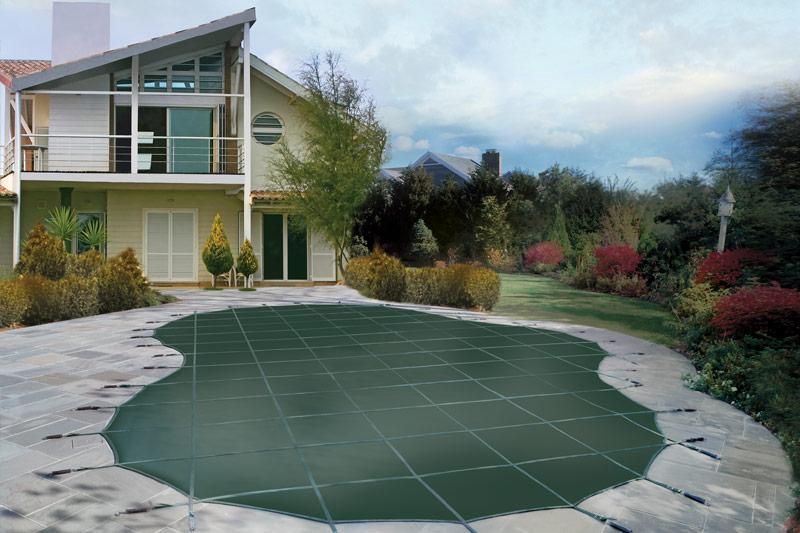
These covers are typically attached all winter, by hooked bungee cords or hooked springs connected to the pool deck, and are usually made in a variety of materials including coated or laminated vinyl or polypropylene mesh. They are custom designed to stop leaf debris from entering the pool but more importantly they also provide safety for animals and small children when designed and installed properly. The custom safety cover was invented in 1957 by Fred Meyer Jr. of Meyco Pool Covers when he found a dead animal in his pool. Today covers are made to meet ASTM safety barrier standards and have kept animals, people and even large vehicles out of the pool. They are not popular in warmer climates, due to the five to ten minutes it takes to fit/remove them, making them inconvenient for repeated application and removal.
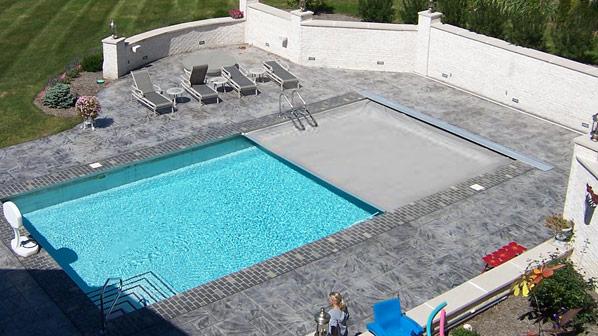
Pool cover automation
A pool cover can be either manually, semi-automatically, or automatically operated. Manual covers can be folded and stored in an off site location. Pool cover reels can also be used to help manually roll up the pool cover. The reel, usually on wheels, can be rolled in or out of place. Semi-automatic covers use a motor-driven reel system. They use electrical power to roll and unroll the cover, but usually require someone to pull on the cover when unrolling, or guide the cover onto the reel when rolling up the cover. Semi-automatic covers can be built into the pool deck surrounding the pool, or can use reels on carts. Automatic covers have permanently mounted reels that automatically cover and uncover the pool at the push of a button. They are the most expensive option, but are also the most convenient. These reels can be run from either an external motor requiring a pit to be dug beside the pool or using an internal motor that spins the reel. Some pool covers fit into tracks along the sides of the pool. This prevents anything or anybody from getting into the pool. They even support the weight of several people. They can be run manually, semi-automatically, or automatically. Safety covers may be required by inspectors for public pools.
Winterization
In areas which reach freezing temperature, it is important to close a pool properly. This varies greatly between in-ground and above-ground pools. By taking steps to properly secure the pool, it lessens the likelihood that the superstructure will be damaged or compromised by freezing water.
Closing vinyl and fibreglass pools
In preparation for freezing temperatures, an in-ground swimming pool's pipes must be emptied. An above-ground pool should also be closed, so that ice does not drag down the pool wall, collapsing its structure. The plumbing is sealed with air, typically with rubber plugs, to prevent cracking from freezing water. The pool is typically covered to prevent leaves and other debris from falling in. The cover is attached to the pool typically using a stretch cord, similar to a bungee cord and hooks fitted into the pool surround. The skimmer is closed off or a floating device is placed into it to prevent it from completely freezing and cracking. Floating objects such as life rings or basketballs can be placed in the pool to avoid its freezing under the cover. Sand or DE filters must be backwashed, with the main drain plug removed and all water drained out. Drain plugs on the pool filter are removed after the filter has been cleaned. The pool pump motor is taken under cover. Winter chemicals are added to keep the pool clean. The innovation of a composite construction of fibreglass, with an epoxy coating and porcelain ceramic tiles has led to the Pre-form, Composite-type with significant advantages over older methods; however, it also has increased sensitivity to metal staining.
In climates where there is no risk of freezing, closing down the pool for winter is not so important. Typically, the thermal cover is removed and stored. Winter sunlight can create an algae mess when a cover that has been left on all winter is removed. The pool is correctly pH-balanced and super-chlorinated. One litre algaecide for every 50,000 litres of pool water should be added, and topped up each month. The pool should be filtered for one to two hours daily to keep the automated chlorination system active.
Safety
Pools present a significant risk of infant and toddler death due to drowning. In regions where residential pools are common, drowning is a major cause of childhood fatalities. As a precaution, many municipalities have by-laws that require that residential pools be enclosed with fencing to restrict unauthorized access. The Virginia Graeme Baker Pool And Spa Safety Act regulates pools to reduce the risk of entrapment. Diving in the shallow end can also lead to significant head and neck injuries; diving, especially head-first diving, should be done in the deepest point of the pool, minimally 8 feet (2.4 m), but desirably 12 feet (3.7 m), deeper if the distance between the water and the board is great.
Many products exist, such as removable baby fences, floating alarms and window/door alarms. Some pools are equipped with computer-aided drowning prevention or other forms of electronic safety and security systems.